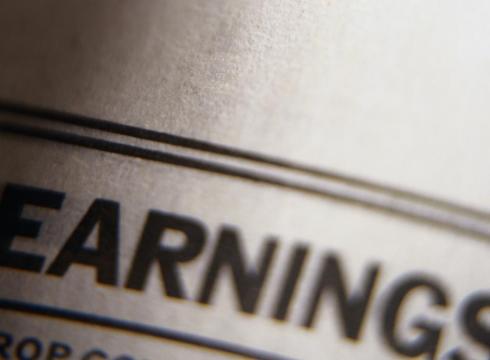by Hubert Marleau, Market Economist, Palos Management
May 3, 2024
The stock market is in an ambivalent mood: it severely punishes slip-ups and handsomely rewards accomplishments at the same time. Overall, companies have registered impressive revenue and earnings gains on both revenue and earnings per share in Q1, beating estimates 74% of the time. Without earnings coming in above expectations shielding soured consumer confidence reported by the Conference Board, signs of stickier inflation are thwarting both the Fed's original plan and the market’s earlier belief that rate cuts were once due as soon as June.
In this connection, the Fed prudently telegraphed a dovish pause on Wednesday, pushing the 2-year Treasury yield below 5.00%. I do not believe, however, that this was attributable to political reasons because the reputational risk is too dangerous. In order to alleviate the pressure stemming from their wait-and-see rate stance to gain time and confidence on inflation, the monetary officers decided to slow the run-off in Treasury bonds owned to $25 billion per month on June 1, rather than $60 billion and Powell ruled out the likelihood of a rate hike despite persistent inflation.
Investors should note that the current economic scenario is nothing like the stagflationary environment of the late 1970s. Powell dismissed this, saying that he didn’t understand the basis of that kind of thinking. The bottom line is that the dollar is too strong and the oil market too weak to think otherwise. A rapid build in oil inventories has occurred, allowing oil prices to crack through a couple of support lines. The geopolitical risk premium for oil has come out.
Last week’s data prints confirmed that the pace of economic growth is decelerating, but not far from falling out of bed, and that progress on inflation may have stalled; but it is still on a modest disinflationary track, suggesting that we are heading back to normal monetary and interest rates.
On Inflation
The core trend in inflation decreased to 2.6% in March from 2.9% in February, according to the NY Fed, bucking the headline observation that wages are still rising at a fast clip, the Q1 Employment Cost Index (ECI) having accelerated at a faster-than-expected 1.2% quarterly rate, from 0.9% in Q4. This was too much for the markets to handle, but under the hood the numbers were not as terrible as they looked. Sticking with the non-unionised part of the private sector, which represents 94% of the labour force, compensation costs rose at a more modest rate, the headline ECI for union and nonunion workers having risen 5.3% and 3.9% y/y. The Labor Department revealed on Friday that average hourly earnings, a reliable measure of wage growth, rose only 0.2% m/m in April, registering a y/y increase of 3.9%.
On Growth
General business conditions indexes weakened in April, showing evidence that the labour market was decisively cooling from the over-pressurised levels witnessed in 2021-2022. With hiring announcements falling, job openings decreased by 325,000 in March, a 3-year low, while the number of workers voluntarily leaving their jobs also fell by 198,000. There were 1.32 job openings for every unemployed worker, down from 2.03 in March of 2022. Moreover, the ISM manufacturing index dipped back below the 50.0 boom-bust demarcation line to 49.2 in April, with the employment sub-index falling to 48.6. The labour market, meanwhile, understated forecasts with 175,000 new jobs in April - way below the 225,000 expected - and the unemployment rate rose to 3.9% from March’s 3.8%. Nonetheless, the working environment remains healthy and steady: the number of Americans who applied for unemployment benefits have not budged in either direction and productivity is still up. In this connection, the Citigroup Economic Surprise Index fell to a low of 2 from 20 on April 26, but the Atlanta Fed revised its growth estimate for Q2 to 3.3% from 3.9% from a week ago. The staff at NY Fed is forecasting a 2.2% increase with a good chance that it could be as high as 3.9%, and a belief that it would not be any lower than 1.2%.
On Markets
In regard to the aforementioned facts, the stock market can now breathe a sigh of relief, even though the propensity for change is front and centre when the S&P 500 trades near the 50-day moving average with little amounts of risk premium. Given that the washout was limited to the energy sectors, the downdraft is not enough to change my 5400 S&P 500 forecast for 2024. Interestingly, long pauses have historically been bullish for stocks. In fact the longer the better. This one has been long and it is going to be even longer.
The Fed reaffirmed what investors wanted to hear, mapping a policy path that bond traders can live with, convincing the financial markets that the monetary stance is restrictive enough to bring inflation down, but not enough to kill the economic recovery. The market got a glimpse of this Friday morning, when the Labor Department printed what April's employment situation was: lower job creation and lower increase in wage rates. Bond yields fell across the yield curve, with 2-year treasuries falling to 4.81% and 5-year to 4.49%, versus 5.38% for the policy rate, implying a rate cut of 25 bps in September. By the end of the week, the market was up 28 points or 0.6%, settling at 5128.
P.S. Curiously, the Bureau of Labor Statistics (BLS) issued a preliminary report on productivity, showing that it had risen only at a 0.3% annualised rate in Q1. I don't buy it. I strongly believe that the number will be revised up. The BLS assumed that output had grown by the annual rate of 1.3% and hours worked by 1.0%. I don't have a problem with the latter, but I do with the former. Real growth, stripped of inventories and imports, grew at the annual rate of 2.9% in Q1. This tells me that productivity was much better than the official 0.3%. In any case, the year-over-year increase was still remarkably solid at 2.9%.
Copyright © Palos Management














